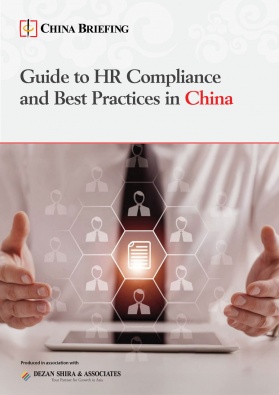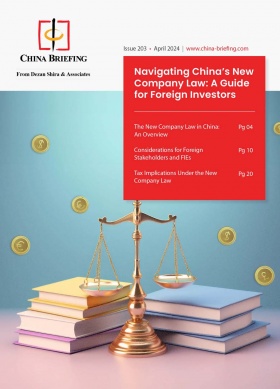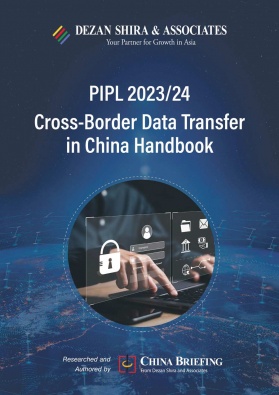Hong Kong’s New Patent Box Regime: A 5% Tax Concession for Qualified IP Income
The patent box tax concession in Hong Kong was enacted on July 5, 2024. Taxpayers who meet specific requirements can be charged profits tax at the concessionary rate of 5 percent instead of the normal profits tax rate of 16.5 percent. The implementation aims to encourage the development of intellectual properties trading as outlined in the 2023 Policy Address and 2023/24 Budget.
On July 5, 2024, the Government of the Hong Kong Special Administrative Region enacted the Inland Revenue (Amendment) (Tax Concessions for Intellectual Property Income) Ordinance 2024, commonly known as the “Patent Box Regime.”
Under this regime, the eligible intellectual property (IP) income of a taxpayer who meets the specified requirements can be subject to profits tax at the reduced rate of 5 percent, rather than the standard profits rate of 16.5 percent. However, it should be noted that upon applying the preferential tax rate under the patent box regime, the taxpayer would not qualify for the two-tiered profits tax rates.
Hong Kong’s Patent Box Regime at a Glance
- The Patent Box Regime covers patents, copyrighted software, and new plant variety rights.
- Eligible IPs registered worldwide can benefit from the patent box tax incentives when their related profits are sourced in Hong Kong.
- Taxpayers must develop eligible IPs themselves. If R&D involves acquiring other IPs or outsourcing part of the activities, the profits eligible for the concessionary tax rate may be reduced proportionally.
- Enterprises must locally register their inventions or new plant varieties to enjoy the patent box tax incentive. This requirement takes effect two years after the incentive’s implementation, i.e., July 5, 2026.
- As the Amendment Ordinance takes effect, taxpayers can apply for the patent box tax incentive starting from the year of assessment 2023/24.
This regime aims to encourage the industrial, research and development (R&D), and creative sectors to create and leverage IP, and thus stimulates and promotes IP trading.
In this article, we introduce the Patent Box Regime in Hong Kong and provide a comprehensive understanding for businesses and investors.
What is a patent box?
A patent box is a special very low corporate tax regime used by several countries to incentivize R&D by taxing patent revenues differently from other commercial revenues. It is also known as an intellectual property box regime, innovation box, or IP box.
Similar to the R&D super deduction policy adopted by many countries (such as the Chinese mainland), the patent box is also a tax tool used to incentivize spending on R&D and develop patented innovations. However, there are key differences between the two approaches. The former encourages companies to invest in more R&D by allowing extra deductions for R&D expenses from their taxable corporate income. In contrast, the patent box incentivizes companies to create patentable innovations or generate profits from existing patents. While having more patents may lead to increased R&D efforts, it could also result in patenting every possible innovation, hoping it will eventually prove profitable.
Through knowledge transfer and spillover effects, the patent box facilitates the practical utilization of intellectual assets. This is expected to attract patent-rich companies to invest in the region.
The adoption of the patent box regime in Hong Kong
The adoption of the patent box regime in Hong Kong began with the introduction of the patent box tax incentive during the Financial Secretary’s 2023-24 Budget Speech. The goal was to foster innovation and enhance Hong Kong’s competitiveness as a regional IP trading center.
Following this announcement, the Hong Kong government conducted a consultation on the proposed incentive in September 2023. Subsequently, on March 28, 2024, the Inland Revenue (Amendment) (Tax Concessions for Intellectual Property Income) Bill 2024 was gazetted, providing detailed provisions for the patent box tax incentive. The Bill was introduced to the Legislative Council in April and passed on June 26, 2024.
Formally enacted on July 5, 2024, Hong Kong’s patent box regime applies retrospectively to financial years ending on or after April 1, 2023.
Requirements to enjoy benefits of Hong Kong’s patent box regime
To enjoy the tax incentives under Hong Kong’s patent box regime, a taxpayer must meet following requirements:
- The taxpayer is an eligible person;
- The taxpayer derives eligible IP income from an eligible IP; and
- An election is made in respect of the eligible intellectual property.
Eligible person
An “eligible person” refers to an individual or entity entitled to derive eligible IP income from an eligible intellectual property. Importantly, this eligibility extends beyond the IP owner. If someone other than the IP owner has the right to earn income from the intellectual property, they also fall within the definition of an “eligible person.”
For instance, consider a licensee who obtains permission to use an eligible IP from its owner. If that licensee then sub-licenses the same IP to another party, earning a sub-licensing fee, they qualify as an “eligible person.”
Eligible IP
In contrast to the nexus approach adopted by the Organization for Economic Co-operation and Development (OECD), which limits eligibility to patents and functionally equivalent IP assets, Hong Kong has embraced a more inclusive approach.
Under Hong Kong’s patent tax regime, eligible IP includes the following types of intellectual property generated from R&D activities:
- An eligible patent;
- An eligible plant variety right; and
- A copyright that subsists in software under the Copyright Ordinance (Cap. 528) or under the law of any place outside Hong Kong.
An eligible patent refers to a patent granted under the Patents Ordinance (Cap. 514) in Hong Kong or by a patent office outside Hong Kong. However, if a patent is granted outside Hong Kong or an application for such a right is filed outside Hong Kong, and the date of filing falls on or after 24 months after the commencement date of the Amendment Ordinance (i.e., starting from July 5, 2026), a corresponding local patent application or grant in Hong Kong is required. This local registration requirement also applies to plant variety rights.
Eligible IP income
Eligible IP income for Hong Kong’s patent box regime includes:
- Income derived from exhibition or use of an eligible IP asset, such as royalties and licensing income;
- Income derived from imparting of knowledge directly or indirectly connected with the use of the eligible IP, regardless of whether it happens within or outside Hong Kong;
- Income derived from the sale of an eligible IP;
- IP income embedded in sales of products or services; and
- Amount of insurance, damages, or compensation derived in relation to an eligible IP.
To determine the embedded IP income, the portion that can be attributed to the eligible IP shall be calculated in the way that best secures consistency with the nexus approach adopted the OECD.
Election mechanism
The term “election” under Hong Kong’s patent box regime refers to a specific action taken by an eligible person.
An eligible person can elect for the tax concessions in respect of an eligible IP through an election mechanism:
- The election must be made in writing;
- The election, once made, will apply to the year of assessment for which the election is made and all subsequent years of assessment (i.e. no annual election is required); and
- The election made is irrevocable.
What is the OECD’s nexus approach?
The nexus approach, adopted by the OECD under BEPS Action 5, is designed to ensure that preferential tax treatment for IP income is only granted if there is a direct connection between the income and the expenditures incurred to develop the IP.
This approach evaluates the harmfulness of tax regimes by requiring a nexus ratio, where the qualifying expenditures on R&D must be proportionate to the overall expenditures. This ratio acts as a proxy for substantial economic activities, ensuring that tax benefits are aligned with genuine economic activity.
Circumstances under which tax benefits will be withdrawn
Under certain specified circumstances, the tax concession under the patent box regime will be withdrawn, meaning that the tax benefits can no longer apply for the relevant year and the subsequent years of assessment, rather than for the years of assessment preceding the relevant year.
The specified circumstances are as follows:
- The eligible patent is unconditionally revoked.
- The eligible patent application is abandoned, refused, or withdrawn.
- The eligible plant variety right is cancelled or no longer subsists.
- The eligible plant variety right application lapses, is declined or withdrawn, or no longer subsists.
- For eligible patents or plant variety rights with a filing date on or after July 5, 2024, they are not locally registered as required.
Taxpayer’s obligation
An eligible person bears the following obligations:
- An eligible person should include their eligible IP income in the profits tax return and designated form for the relevant year of assessment when the income accrues.
- Within 4 months after the end of the basis period of the year of assessment in which any triggering circumstance occurs (leading to the withdrawal of tax concessions), the eligible person must notify the commissioner in writing that they are chargeable to profits tax.
- The eligible person should retain records related to transactions, acts, or operations involving the eligible IP income. These records should be kept for at least 7 years after the completion of those transactions, acts, or operations, or 7 years after making the initial election (whichever is later).
Implications for potential investors
The patent box regime presents a compelling opportunity for investors and business owners aiming to capitalize on innovation and IP development. By fostering an environment conducive to R&D, Hong Kong intends to attract and retain innovative companies, stimulate IP commercialization, and strengthen its position as an IP trading hub.
Hong Kong’s patent box regime allows globally registered IPs to qualify for tax concessions and companies have a two-year grace period for the locally registration requirements. This approach reflects Hong Kong’s commitment to nurturing a vibrant and dynamic market for innovation from diverse sources.
Overall, businesses that adapt to meet eligibility criteria can expect improved returns on their R&D investments and gain a competitive edge in the global market.
About Us
China Briefing is one of five regional Asia Briefing publications, supported by Dezan Shira & Associates. For a complimentary subscription to China Briefing’s content products, please click here.
Dezan Shira & Associates assists foreign investors into China and has done so since 1992 through offices in Beijing, Tianjin, Dalian, Qingdao, Shanghai, Hangzhou, Ningbo, Suzhou, Guangzhou, Haikou, Zhongshan, Shenzhen, and Hong Kong. We also have offices in Vietnam, Indonesia, Singapore, United States, Germany, Italy, India, and Dubai (UAE) and partner firms assisting foreign investors in The Philippines, Malaysia, Thailand, Bangladesh, and Australia. For assistance in China, please contact the firm at china@dezshira.com or visit our website at www.dezshira.com.
- Previous Article China Announces Several Measures to Facilitate Hotel Accommodation for Overseas Personnel
- Next Article China’s Export Surge: A Closer Look at H1 2024 Trade Expansion







